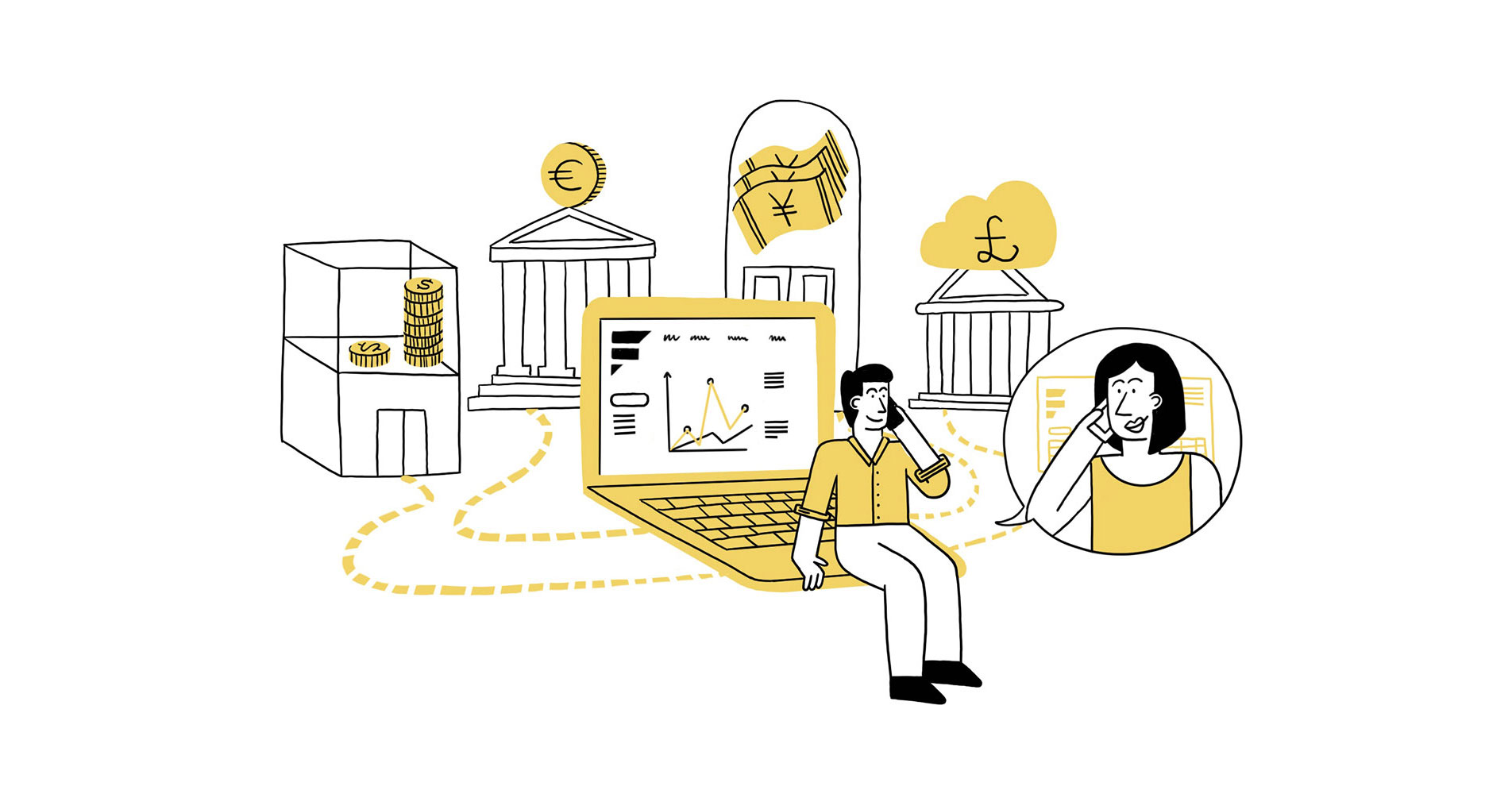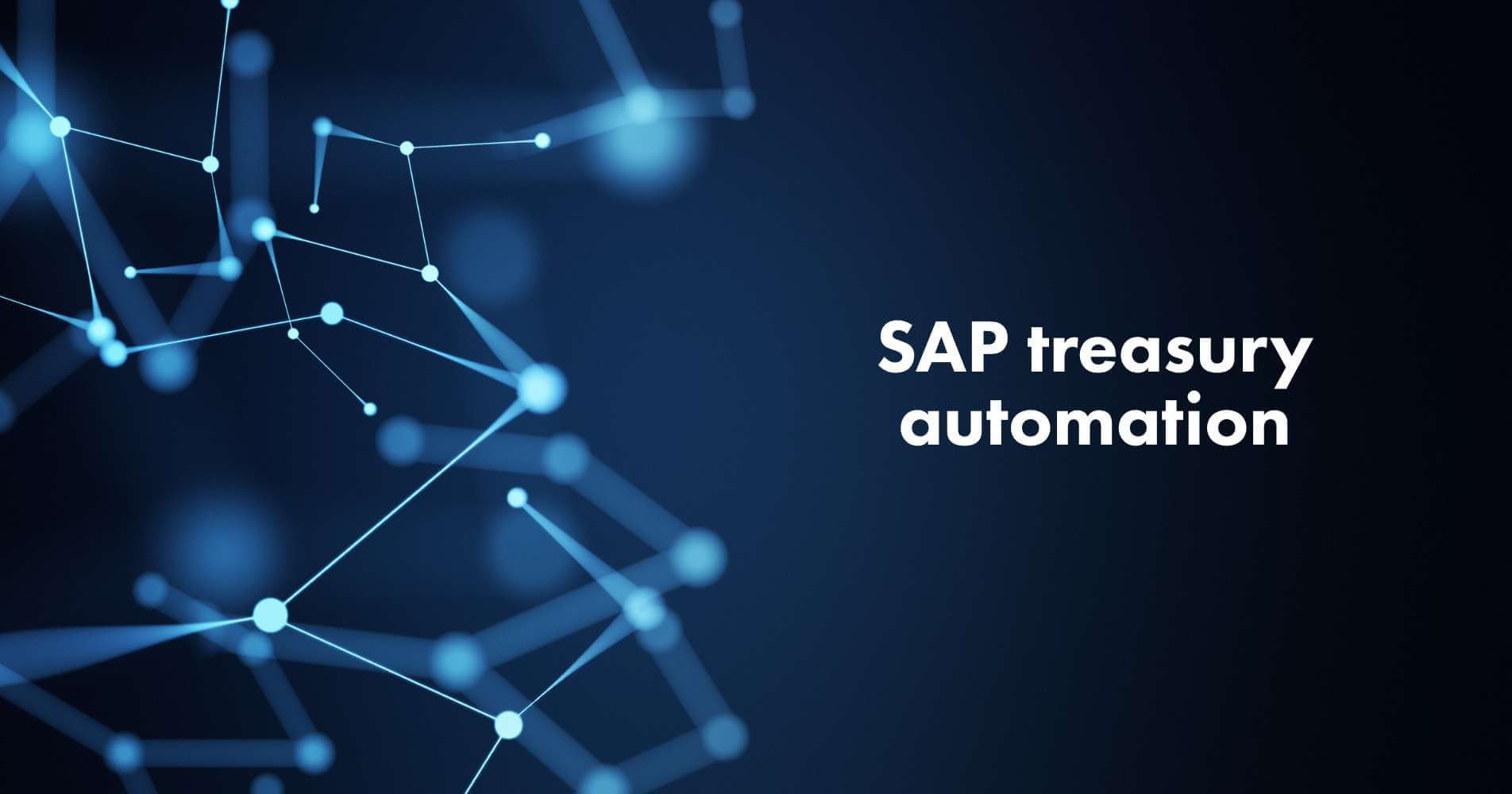Tomorrow’s treasury – A strategic business partner with real-time insights based on API banking

The waves of open banking innovation reach the corporate sector as banks look into providing better service for their biggest clients. Banks hold a lot of data that helps automate treasury operations. For banks, APIs offer the potential of monetizing the data and innovative ways of providing banking services. Businesses benefit from API banking with new and unprecedented opportunities to digitize finance operations end-to-end and become real-time.
Banking APIs and Digital Treasury
Digitalization is opening up new exciting opportunities for corporate treasuries. Open banking and Application Programming Interfaces (APIs) accelerate digital transformation, supporting the journey towards real-time processes and a connected, data-driven world. It’s a new era for treasuries – an era of treasury’s significance growing and the role evolving to a strategically important partner for the business in many fields. The Covid-19 crisis has further accelerated these transformations.
The world is more complex, fast-moving, and customers demand more: e.g., digital processes, flexible financing solutions, and local currency pricing. Lean, efficient, and digitized treasury workflows make every business run faster. More importantly, it frees treasury resources to focus on value-adding tasks and allocating more time to collaboration, strategic thinking, and communication — becoming a valued business partner.
Real-time is the new normal for treasuries
Treasury is a unique corporate function at a crossroads of multiple critical enterprise IT systems, mainly ERP, TMS, and CRM. Dealing with legacy systems is a challenge. Data integrations are either file-based or non-existent, leading to fragmented data, processes, and workflows. Data aggregation means more spreadsheets, while pressure for more transparency grows both internally and externally. APIs are an essential driver for solving these challenges for tomorrow’s integrated treasury, supporting the journey towards real-time services and digitalization.
Moritz Strobel, Global Head of Open Banking/API at Deutsche Bank, explained in a CTMfile WEBchat how “APIs and real-time is becoming the new reality. Digitalization and digitized processes, this is what is going to be everywhere in the different business processes, be it B2C or B2B.” Covering the trend of customer perception and customer needs of instant execution, he added, “Everything is becoming instant, and this is where the processes within the larger companies become real-time from end-to-end. Treasury, liquidity, and payments services are part of those end-to-end processes”. The editor of CTMfile, Jack Large, concluded the discussion well “This is a fundamental trend towards more digitalization, more removal of processes that were not necessary.”
APIs lead the way from end-of-day batch processing to real-time
Digital offering is high on the agenda of every bank. Banks are innovating various API products to serve better their largest clients, corporations, and institutions. The largest cash management banks have their own set of premium APIs available, and others are following. In addition to instant reporting and payments, these cover, e.g., FX dealing, account validation, trade finance, transaction monitoring, market data, and cut-off schedules. APIs are a game-changer for treasuries — moving from SWIFT-based or host-to-host connectivity and end-of-day batch processing into real-time connectivity, data visibility, and payments.
The challenge for corporations is how to take APIs into use. As lack of standardization exists across banking APIs, this causes headaches for most organizations dealing with multiple banks. Developers are scratching their heads as authentication methods, certificate handling, and encryption processes vary between banks. Additionally, there are differences with data exposed via API endpoints and data formats. Taking banking APIs into use requires specific technical skills and IT resources — which treasuries often lack — and a considerable IT investment when connecting separately to each bank and their various APIs.
As these roadblocks get cleared, customers will keep the banks on their toes, as technology will be a crucial decision driver for corporations choosing their relationship banks. EY’s white paper concludes, “The banks that are the quickest to identify, assess and implement these new technologies into their treasury services offerings will be the ones best equipped to support the needs of their corporate treasury clients in the coming years.”
Leverage the latest tech
Modern software with DevOps — lean & agile — ways-of-working offers the needed building blocks leveraging the potential of open banking and APIs. Working with the latest tech stack removes the barriers to automation, offering system flexibility and scalability. DevOps brings the needed agility and speed in execution, providing immediate benefits to the end-users. Partnerships with Fintechs offer opportunities and a fast lane to becoming tomorrow’s treasury — for both corporations and financial institutions.
Cyber-security plays a crucial role in handling and sharing sensitive data securely. Connection, signing, and authorization certificates ensure secure information exchange and mutual trust between the parties. OAuth as a standard authentication protocol enables a safe method for verifying digital identities. End-to-end bank-grade encryption adds another layer of data security.
How to become a real-time treasury?
Bank APIs offer plenty of opportunities for Treasuries. However, no clarity of the potential use cases and the lack of IT resources slows down APIs’ adoption. Treasury employees are struggling under pressure with excel spreadsheets and manual processes. Often they are stuck dealing with bank portals that look still the same as in the ’90s. How to then kick-start the journey to a real-time treasury?
- Build a scalable foundation and get inspired by micro-services architecture. Get the basic building blocks right and start delivering business benefits—even small ones, fast. Collect feedback and innovate more.
- Tackle the low-hanging fruits first to free employees time for more value-adding tasks. Allocate that time for accelerating digitalization further. At its best, it’s a learning journey for the organization, where employees can future-proof their careers by learning new skills & expertise.
- Focus where open banking adds the most value to the business and customers; however, be smart. Draw a roadmap, prioritize and be agile, adjusting the plan as needed.
Become an early-adaptor to influence tomorrow’s treasury
Treasury of Tomorrow builds from API connectivity, real-time, and intelligence. Getting it right from the beginning will enable accelerated digitalization and leveraging future services offered via APIs. Artificial intelligence and machine learning provide further automation opportunities — but these require the basic building blocks to be in place first — including integrations to existing and future IT solutions, where API connectivity plays a crucial role.
Treasuries have an exciting future ahead. Becoming an early adapter and leveraging Fintech providers’ capabilities offers treasuries the opportunity to be at the forefront of the development. J.P.Morgan’s Ray Nazloomian, Executive Director of Wholesale Payments Innovation, notes, “We are at a unique tipping point where forward-looking treasurers have an opportunity to influence the treasury solutions of tomorrow.” He also flags the importance of treasury teams engaging with external innovators in an article about driving innovation in corporate treasury.
For treasury employees being part of the innovation process offers exceptional learning opportunities. Employees have the chance to be part of the transformation from spreadsheets to managing AI-powered treasury. Skillsets needed in future finance jobs look different than today, and employees get the possibility to future-proof their careers. Co-creation and co-designing the solutions offer an excellent path to benefits from both the corporate and the employee perspectives.
FinanceKey offers a Web App for easy access to corporate banking APIs and a single API to integrate banking data into your existing IT systems, such as ERP, TMS, or CRM. Please contact us for more details: hello[at]financekey.com.


